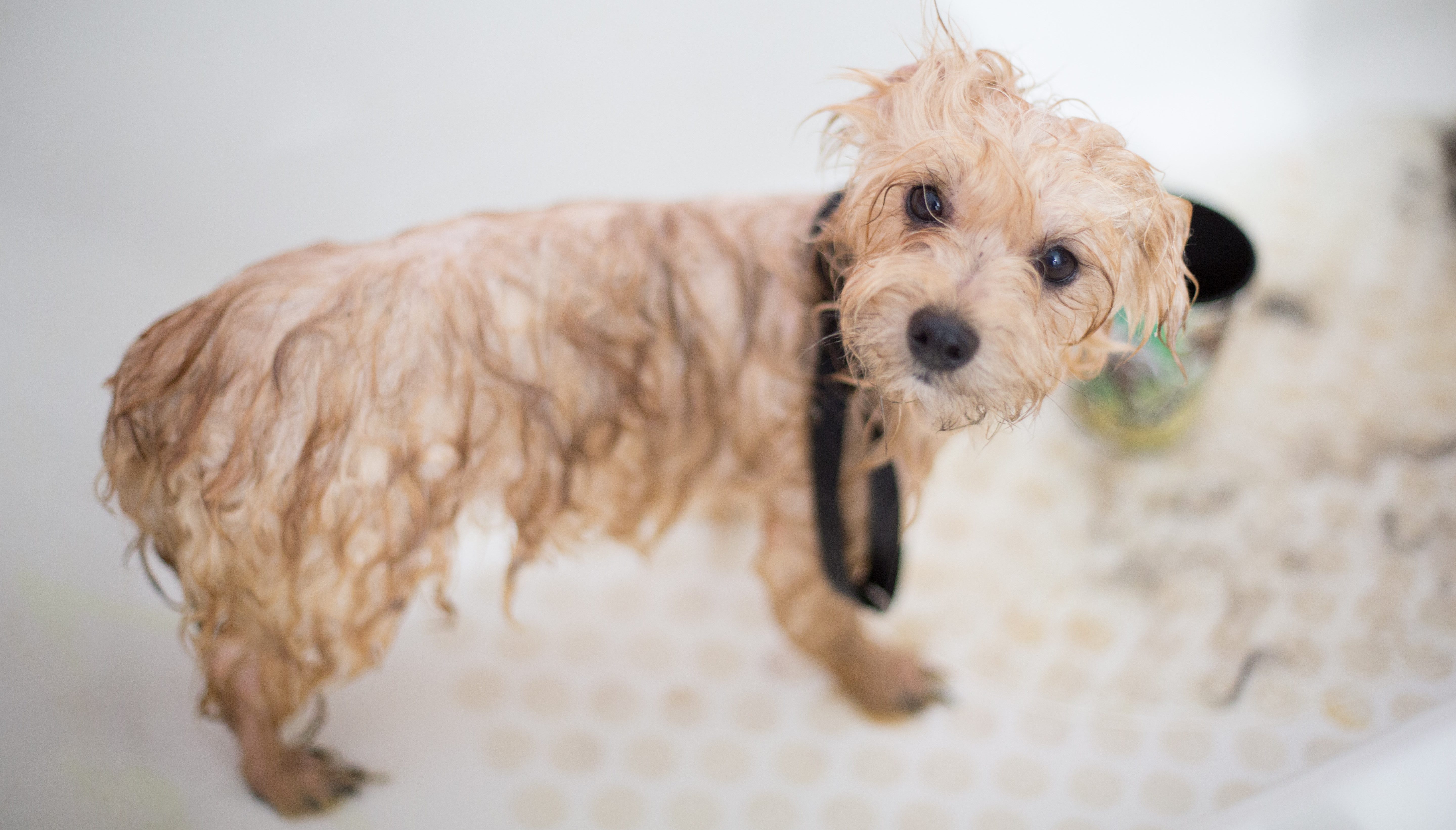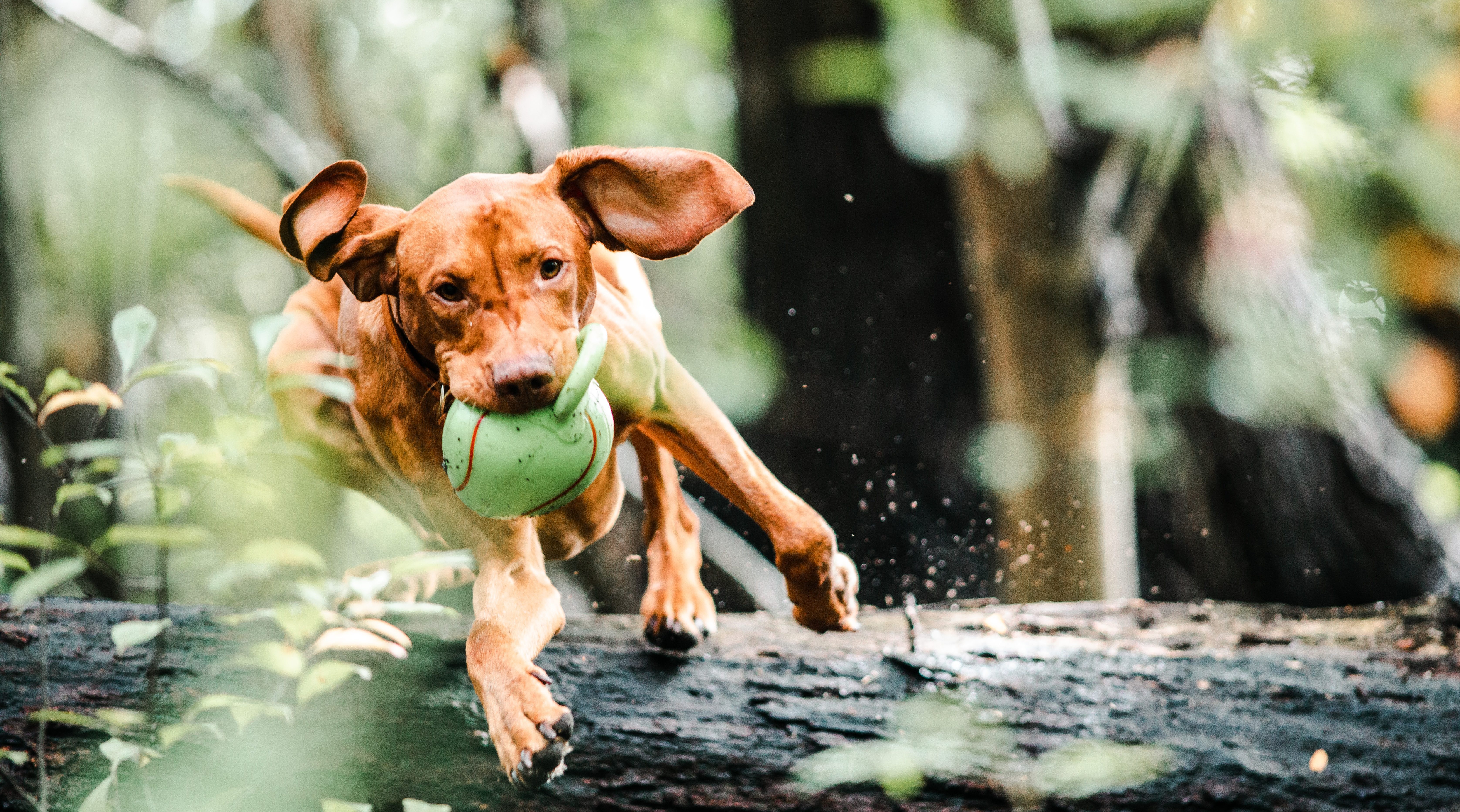How do Fleas Hurt My Dog?
Before I list all the ways that these devilish insects can cause problems, let’s talk about what fleas actually are. They are parasites! Yes, by definition, a flea is a parasite because they live on (external parasite) or in (internal parasite) other creatures. And, it just so happens that fleas really favor our furry pets. Fleas are the most common external parasites found on dogs and fleas like our pet’s tasty, warm blood.
Fleas will decrease outside during cooler climates (as they hibernate), but can survive all year long inside our warm houses. Warmer weather can cause the life cycle of a flea to speed up. Fleas prefer temperatures of about 65-80 degrees, prefer dampness, high humidity and dark areas, so many pet owners dread the summer months.
Dogs pick up fleas from the environment. Any other animal that has carried a flea, such as other dogs, cats, possums, mice, squirrels, raccoons, coyotes and rats walk around and drop fleas everywhere. Those of us that have outdoor adventures such as hiking the mountain trails, sandy beaches or camping, have more susceptible pets.
Fleas lay eggs that look like tiny, little worms (these flea eggs would have to be magnified for you to see), and they drop onto the ground. Those little worms hatch into fleas. Once those eggs hatch, they begin to mature into an adult flea. The next time to take your dog for a walk, or your loved-one goes to hang out in the yard, the fleas hop on and start drinking their blood. Once your pet has the fleas on board, eggs drop all around your house. Once those eggs hatch, the cycle starts all over again.
According to the Vet West source, a flea can live about two to three months and one flea can lay about 2,000 eggs in a life cycle. These pesky bugs can live on your pet for several weeks and need only suck your canine’s blood two or three times and lay 20 to 30 eggs each day. A flea could lie dormant in your carpet or crack in your floor, if undisturbed, without feeding for about 100 days. So, that means that you could have them sleeping around your house and yard, and, when the climate and host availability are just right, they can awaken and need a blood meal.
This flea/parasite can also live off of organic matter, skin scales and other flea’s dirt (feces). A female flea cannot lay eggs until after her first blood meal and then can begin laying eggs in about 2 days after that. Now, that you are thoroughly getting the “heebie-jeebies”, let’s move on so we can find these troublesome bugs and eliminate or prevent them from attacking our pet’s.
How do we know if our dog has fleas?
 1. The first sign that most dog owners see? Their dogs are scratching and gnawing at their skin and fur. If you look for fleas in/on your dog’s coat and don’t find any, that doesn’t mean your pet is not infested. Those little buggers can move quickly, hide and evade you.
1. The first sign that most dog owners see? Their dogs are scratching and gnawing at their skin and fur. If you look for fleas in/on your dog’s coat and don’t find any, that doesn’t mean your pet is not infested. Those little buggers can move quickly, hide and evade you.
2. One of the best ways to look for flea presence is to gently roll your pet on his back and look around the pink of their tummy. The armpits and groin area are preferred flea spots because it is warm and protected. You might see little brown fleas scurrying and hopping through that area. Using a flea comb is helpful to catch those critters. The comb tends to work best near their rear and behind your fur child’s ears.
3. An alternate way of looking for flea evidence, is to look for “flea dirt”. “Flea dirt” is actually the waste matter from the flea after he has sucked the blood of your dog. To check for flea dirt, have your dog stand on white paper or white towel and brush or comb their hair briskly and these small, black pieces of “dirt” will fall. If you dampen those black flecks, you will see a reddish color from the blood in this flea fecal matter.
4. Cleaning Dogs. You could also give your dog a bath and keep the sink full of water to inspect for the black spots in the water. Because of the presence of the soap, the fleas usually die and sink. If you’re not up for doing it yourself, you can hire a mobile groomer on Petworks.

5. You could also make a “flea trap”. If you would like evidence of fleas in your home, fill a shallow dish with water and a few drops of liquid soap. Put a small candle in the middle and light it. Fleas are drawn to the warmth of the flame and inadvertently land in the soapy water. Try this in a dark area where your pet sleeps at night. (Caution: don’t let your dog drink this or be hurt by the fire, so better to put in an elevated spot).
Fleas hurt your dog in these ways:
1. Some dogs develop allergies to fleas. Flea bites are the number one cause of allergies in dogs. When a flea bites your dog, it introduces chemicals at the bite site. The flea’s “saliva” irritates the skin of your dog causing a reaction and, for some pets, affects them with severe itching, redness, inflammation. The bite can also cause hair loss. With some of our dogs, it only takes one flea bite to have a reaction causing this allergic dermatitis (allergies in the skin).
2. Even if your pet is not “allergic”, flea bites can still be irritating, itchy and painful to dogs.
3. Since fleas are drinking the blood of your pet, large flea infestations can be problematic. Around 70 fleas can drink one ml of blood per day. A 1 lb. kitten or puppy only holds about 30 ml of blood total, so you can see how this is dangerous. If you have a small dog, the fleas could steal their blood faster than they can make new blood causing severe anemia (blood loss). My grandmother lost a small toy poodle puppy to this very problem. That was so sad and so preventable.
4. Dogs will inherit tapeworms from fleas. All fleas carry tapeworms. This is problematic because, if your dog eats a flea, the tapeworms end up in the intestines. Tapeworms inhabit the intestines and interfere with nutrient absorption. You’ve probably seen those little worms that look like grains of rice in dog or cat feces–those are the tapeworms.
How do I prevent flea infestation?
It is important for health-conscious pet owners to practice prevention, as this is key to prevention of an infestation. It is very important to mention here that healthy dogs, with strong immune systems are much more able to repel fleas and are more resistant to having reactions to a flea bite. Those pets fed unhealthy diets, emotionally stressed or have been overmedicated tend to have more problems.
Some dogs and cats may not do well with topical or oral insecticides and pesticide-type applications for your pet. Please discuss with your veterinarian any known side effects such as allergies, skin conditions, ear infections, bladder/kidney infections, digestive orders (stomach and intestinal inflammation) and more.
For sensitive pets, ask your vet about any natural flea prevention such as herbal, homeopathic and products such as food-grade diatomaceous earth. Be careful with some of the flea shampoos that may be harsh on our pets. Look for gentle soaps, sprays, and natural remedies for prevention.
About the Author
 Dr Gail Marasse has degrees and certifications in the following: Dietetics, Holistic Pet Nutrition, Animal Chiropractic, Endocrinology, Functional Blood Chemistry and Veterinary Orthopedic Manipulation. Dr Gail has dedicated her life to continually learning how to help heal the animals with non-drugging compounds and actively blogs and writes in this capacity. She donates time and treatment to several rescues in her local area of Ventura County, including: AFLAR (All For Love Animal Rescue), CARL (Canine Adoption and Rescue League), Rosies Dog Rescue and APARC (Santa Paula Animal Rescue Center). She is also a member of the AHVMA (American Holistic Veterinary Medicine Association).
Dr Gail Marasse has degrees and certifications in the following: Dietetics, Holistic Pet Nutrition, Animal Chiropractic, Endocrinology, Functional Blood Chemistry and Veterinary Orthopedic Manipulation. Dr Gail has dedicated her life to continually learning how to help heal the animals with non-drugging compounds and actively blogs and writes in this capacity. She donates time and treatment to several rescues in her local area of Ventura County, including: AFLAR (All For Love Animal Rescue), CARL (Canine Adoption and Rescue League), Rosies Dog Rescue and APARC (Santa Paula Animal Rescue Center). She is also a member of the AHVMA (American Holistic Veterinary Medicine Association).


